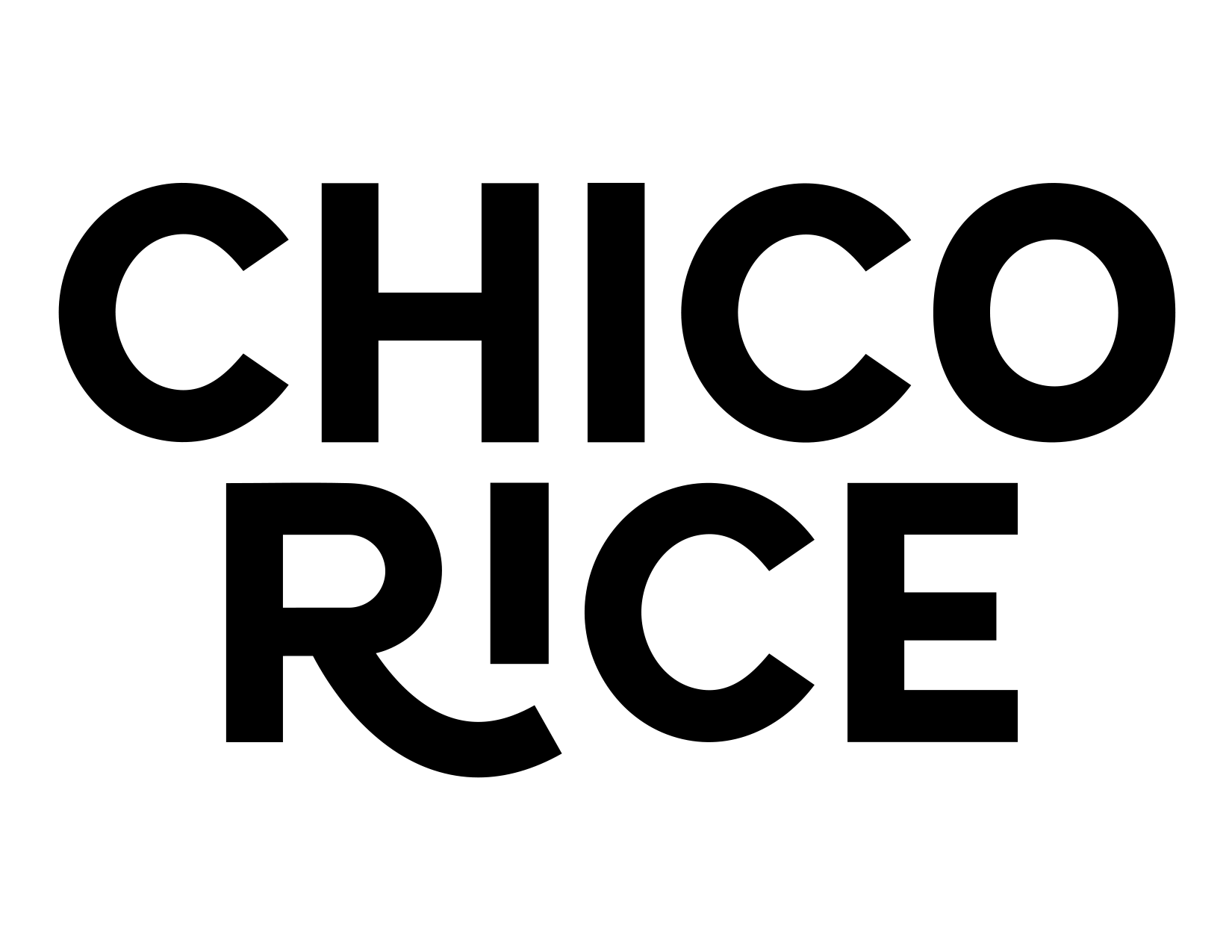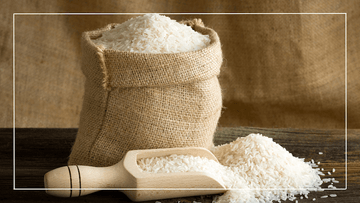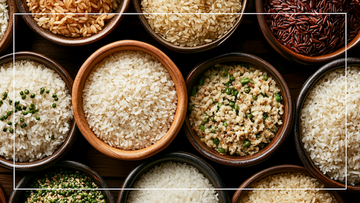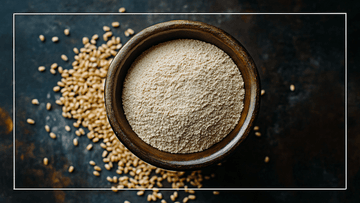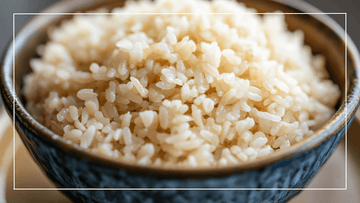When it comes to selecting the perfect rice for your culinary creations, the choice between Indica rice vs. Japonica rice can be quite perplexing.
Both varieties offer unique characteristics and flavors that cater to different tastes and preferences.
We will go through the differences between Indica rice and Japonica rice to help you make an informed decision about which one suits your needs or dish best.
➡️ Shop Fresh Milled Japonica Rice! ⬅️
Understanding Japonica and Indica Rice

Japonica and Indica rice are two of the most common rice types. These two rice varieties have many cultivars but overall, they are two distinct types of rice with their own set of attributes and qualities.
Japonica Rice
Japonica rice is a short to medium-grain rice renowned for its sticky texture and subtle sweetness.
This type of rice is predominantly grown in East Asia, particularly in Japan, Korea, and China. However, it is also cultivated in parts of the United States, such as California, where Chico Rice produces its high-quality varieties.
➡️ Shop Chico Rice Japonica Variety ⬅️
Japonica rice has several notable characteristics:
- Grain Size: It ranges from short to medium grain.
- Texture: When cooked, Japonica rice has a sticky texture, making it ideal for dishes that require rice to clump together, such as sushi and rice bowls.
- Flavor: It offers a subtle sweetness, and depending on the rice type, a nutty flavor that complements a variety of cuisines.
Popular varieties of Japonica rice include Koshihikari and Calrose. Koshihikari is also known as a sushi rice and Calrose is a well-known cultivated Japonica variety that is largely grown in California.
Indica Rice
Indica rice, on the other hand, is typically long-grain rice known for its fluffy texture and separate grains when cooked. This type of rice is widely grown in tropical and subtropical regions.
The rice grows mostly in the Philippines, India, Pakistan, Central and Southern China, and Africa.
Key characteristics of Indica rice include:
- Grain Size: Indica rice is usually a long grain variety.
- Texture: Indica rice is less sticky and has a firmer texture compared to Japonica rice, making it perfect for dishes like biryanis, pilafs, and fried rice where distinct, separate grains are desired.
- Flavor: While it can vary, Indica rice generally has a more neutral flavor that absorbs the flavors of accompanying dishes well.
Indica rice is typically long-grain rice known for its fluffy texture and separate grains when cooked.
Popular varieties of Indica rice include Basmati and Jasmine. Basmati rice is known for its aromatic fragrance and elongated grains, making it a staple in Indian and Middle Eastern cuisines.
Jasmine rice, with its fragrant, floral aroma, is a favorite in Thai and other Southeast Asian dishes.
Health Benefits Comparison: Indica Rice vs. Japonica Rice
If you are comparing Indica rice vs. Japonica rice health benefits you will find that both rice varieties offer a range of health benefits, many overlapping between the two.
Health Benefit Similarities
Complex Carbohydrates for Sustained Energy
Both Japonica and Indica rice are rich in complex carbohydrates, providing sustained energy throughout the day.
Unlike simple carbohydrates that cause rapid spikes and drops in blood sugar levels, the complex carbs in both types of rice release energy slowly, maintaining stable blood sugar levels and offering long-lasting energy.
High Fiber Content for Digestive Health
Japonica and Indica rice, especially in their brown rice forms, are high in dietary fiber. Fiber is crucial for maintaining a healthy digestive system, aiding in regular bowel movements, and preventing constipation.
The high fiber content in both types supports gut health by fostering the growth of beneficial bacteria.
Essential Vitamins and Minerals for Overall Well-being
Both Japonica and Indica rice are packed with essential vitamins and minerals that promote overall well-being. They are good sources of B vitamins, including thiamine (B1), niacin (B3), and pyridoxine (B6), which help with metabolism, nerve function, and supporting the nervous system.
Additionally, Indica rice and Japonica rice contain magnesium, a mineral vital for muscle and nerve function, blood pressure regulation, and bone health.
Gluten-Free Benefits
Japonica and Indica rice are naturally gluten-free, making them excellent options for individuals with gluten sensitivities or celiac disease.
This benefit allows those with gluten restrictions to enjoy a variety of rice dishes without health concerns.
Health Benefit Differences
Low Glycemic Index and Blood Sugar Control
Though both types of rice have a lower glycemic index which allows the rice to be digested and absorbed more slowly causing a gradual rise in blood sugar, there is one that is lower than the other.
Basmati rice, an Indica rice variety, is known for having a lower glycemic index than most rice.
While both rice varieties could be beneficial for individuals who are diabetic or insulin sensitive, Basmati rice is the best choice if you’re concerned about blood sugar.
Vitamin E
Vitamin E is present in both Japonica and Indica rice, however when you compare Indica rice vs. Japonica rice varieties you will see that Japonica rice contains higher levels of vitamin E.
In brown Japonica rice there is even more vitamin E because the bran layer that is left on brown rice contains more nutrients.
Vitamin E plays an important role in skin health and immune health.
Culinary Uses and Versatility
Both Japonica and Indica rice have unique characteristics that lend themselves to a variety of culinary applications.
Understanding distinct textures and flavors of Indica rice vs. Japonica rice can help you choose the right type of rice for your dishes.
Japonica Rice Culinary Uses

Japonica rice's unique sticky texture and subtle sweetness make it a staple in a variety of dishes.
One of its most popular uses is in sushi, where its stickiness is crucial for holding the rice together and complementing the delicate flavors of fish and other ingredients.
This same quality makes it ideal for making Onigiri, a popular Japanese cuisine, which can be filled with various ingredients such as pickled plums, tuna, or salmon, offering a convenient and flavorful meal option.
Another notable use of Japonica rice is in risotto. The typical rice used in risotto is Arborio rice, which is a cultivar of Japonica rice. This rice is well known for soaking up the delicious flavors and complimenting the creaminess of risotto.
If you are looking for an arborio rice substitute for your risotto dish you can use another Japonica rice variety, like California Milled Blonde Japonica Rice from Chico Rice.
Japonica’s rice ability to absorb flavors makes it a great base for fusion dishes, allowing chefs and home cooks to experiment with different spices, broths, and sauces to create unique and delicious meals.
Indica Rice Culinary Uses
Compared to Japonica rice Indica rice, when cooked, stays separated and firm, which is ideal for dishes like fried rice and pilafs.
Indica varieties like Basmati and Jasmine are commonly paired with curries due to their fragrant aroma and ability to absorb rich flavors, enhancing the overall dining experience.
These types are particularly valued in Indian and Southeast Asian cuisines. Additionally, Indica rice works well in cold salads because the rice stays separated and combines well with fresh vegetables, herbs, and dressings.
The way that Indica rice does not stick together and stays firm and fluffy makes it a great rice for a variety of robust flavors and cooking techniques.
Making the Right Choice
In the debate between Indica rice vs. Japonica rice, there's no clear winner—each variety has its own strengths and applications. Whether you prefer the fluffy texture of Indica rice or the sticky consistency of Japonica rice, both options offer delicious possibilities for culinary exploration.
By understanding the differences between Indica rice vs. Japonica rice and experimenting with various recipes, you can discover which one best suit your palate and cooking style.
So, go ahead and embrace the diversity of these two types of rice, and let your culinary creativity flourish!
➡️ Shop Japonica Chico Rice! ⬅️
